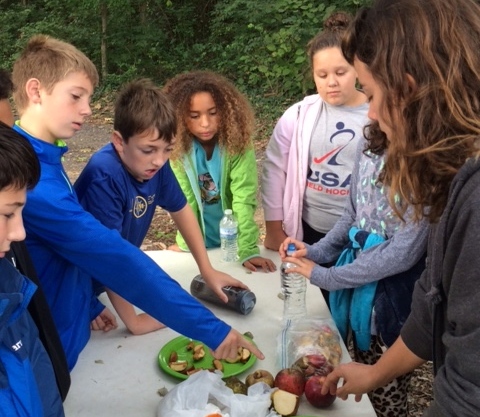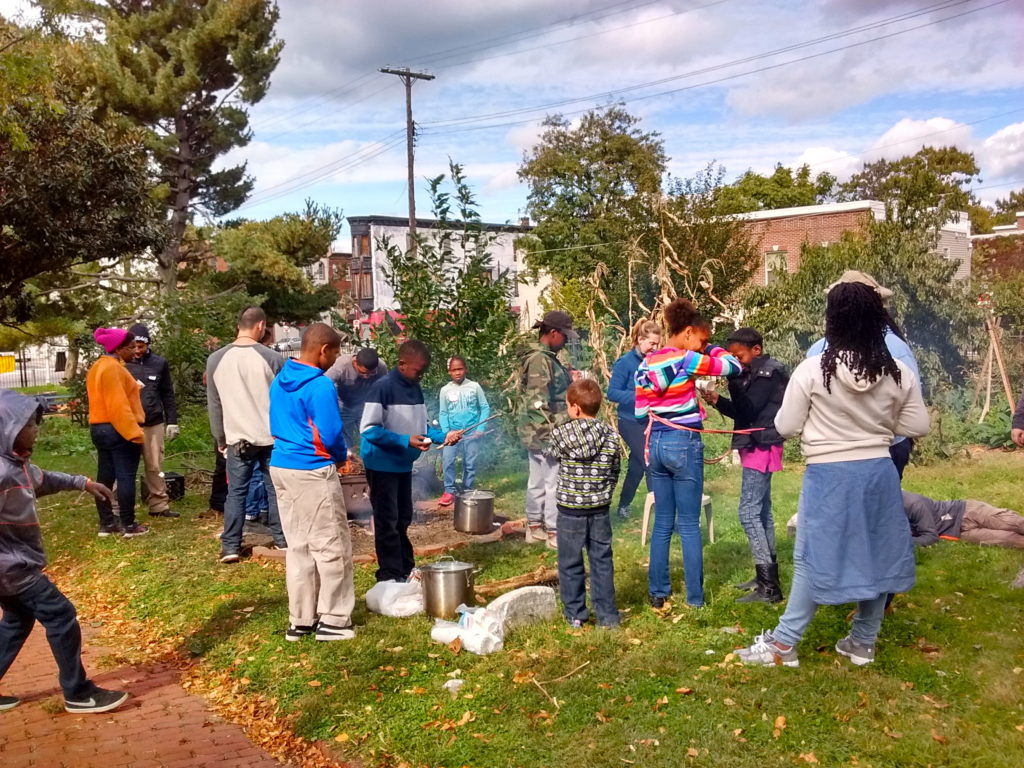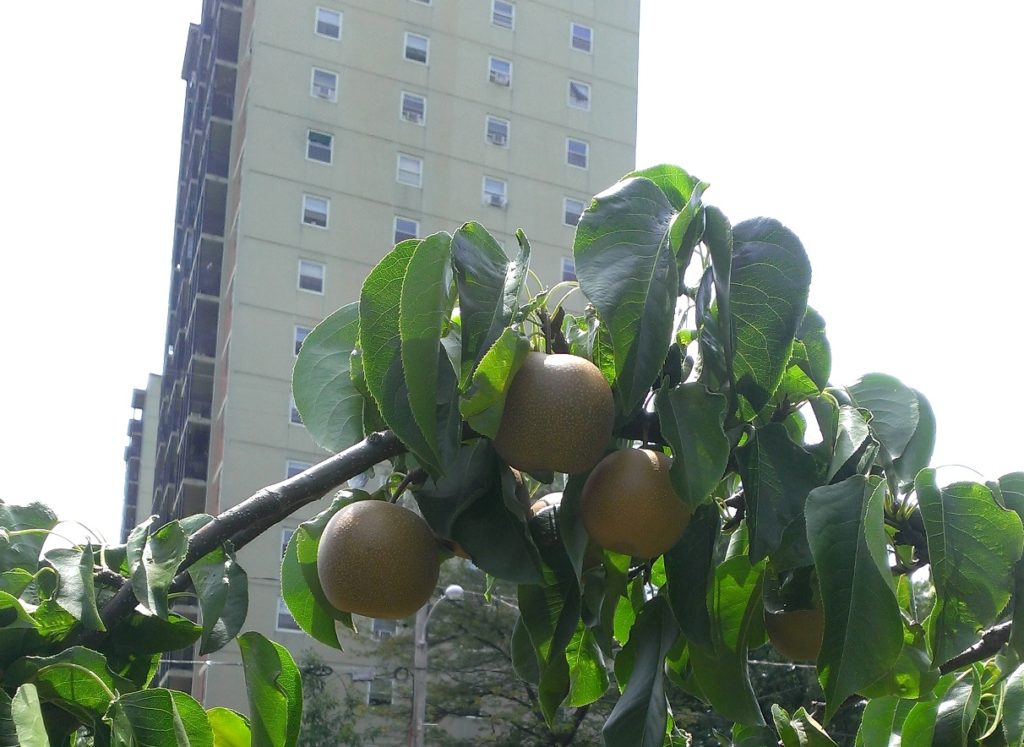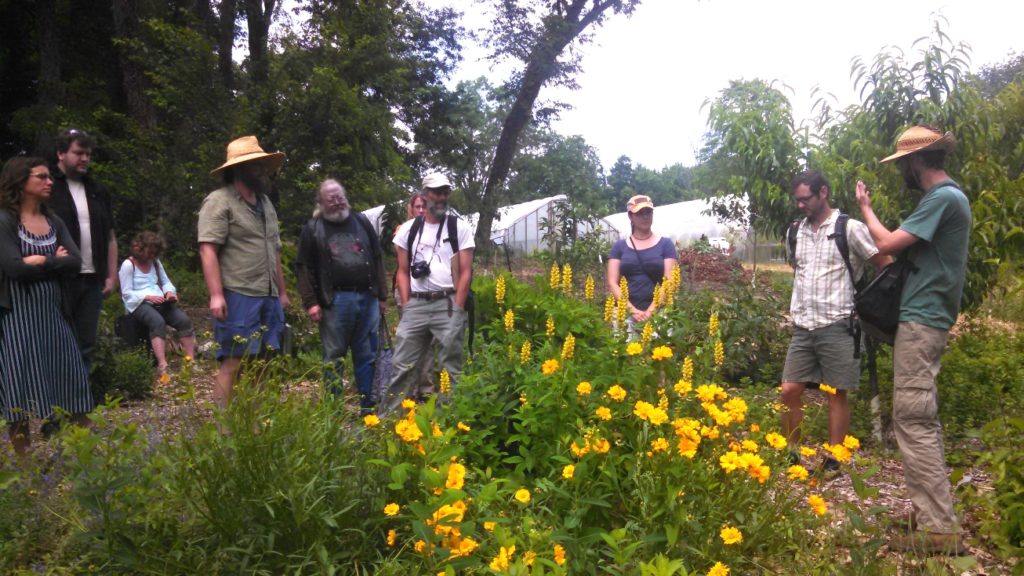In all, 45 of 55 total POP partners (82%) participated in our annual Orchard Partner Survey in November and December 2015. As a thank you, POP is distributing a requested orchard item, including pruning tools, pole harvesters, produce scales, and neem oil to all participating partners.
ORCHARD VALUE
Once again, the highest percentage of respondents rated “Educational Opportunities” in orchards as having the “highest value” (47.9%). Partners also commonly placed Highest Value and High Value on orchard contributions to “Community Health and Nutrition” and “Environmental Impact” (both 37.5%). While 29% of respondents placed high value on their orchards for food production and distribution, this category also had the highest incidence of “No value” and “low value” selections. Similar to past years, this relatively lower rating for the value of food production and distribution is somewhat distorted by responses from younger and newly planted orchards that have not yet come into full production (a process that can take 5 years). Some older sites are having trouble seeing good yields due to improper harvesting, pests, and diseases; and some small spaces with relatively few trees will obviously be more valued for their educational impact rather than their impact on the food system. However, many of our partner sites with more established sites or larger numbers of plants (Bartram’s, Carousel House, SHARE, Historic Fair Hill, Strawberry Mansion, Mill Creek Farm, Preston’s Paradise, Earthskeepers, Pentridge) rated food production and distribution with high and highest value.

We also requested stories from our partners illustrating the value of their orchard spaces (link here to read some of the stories). The most common themes of these responses were the value of educating and exposing people to freshly grown fruit, the reactions that people have to tasting things for the first time, the lessons involved in learning to care for their orchard spaces, and the ways in which children respond to the spaces. More than half of all respondents also took time to write into at least one of their freeform answers how thankful they are for the work that POP does for its partners and their communities.
ORCHARD USAGE
More than 1,800 people participated at least once in orchard care during the 2015 season, and 5,740 people tasted something grown in a POP partner orchard–a 126% increase since 2014. 5,810 people used a POP partner orchard as a gathering space–a 38% increase since 2014. 3,480 people participated in educational programs at orchards, averaging 76 per site (down from 87 in 2015). A 126% increase in the total number of people who have tried an orchard fruit and a 38% increase in the number of people using orchards as gathering spaces in just one season is a very exciting indicator that our greater number of orchard spaces and maturing orchards are reaching more people.

YIELD DISTRIBUTION
Each of POP’s partners has a different distribution plan which they make clear to us during the application process. In 2015, 29% of orchard yield was harvested for free by community members, 25% was harvested by orchard workers for free distribution to the community, 9% was sold at farmers’ markets, 8% was sold in on-site farmstands, 8% was lost to pests and disease, 8% went unharvested, 3% was added to CSA shares, 3% was turned into value-added products, and 7% was distributed by other means (to emergency food centers, for example.)
ORCHARD PRODUCTION
It is demonstrably difficult to accurately track yield within spaces visited by so many people and where free harvest from community members is encouraged. However, estimates of yield are getting better with each passing season, and POP has taken measures to provide partners with reminders and methods to improve their tracking. Based on survey analysis of tree fruits, peaches, nectarines, apples, Asian pears, plums, sweet cherries, and European pears produced the highest yields, and all tree fruits had significantly higher harvests reported than 2014. The only decline in reported tree fruit yield was for serviceberries (which could be due to a failure to track yield or the prevalence of rust disease on some trees).
Conversely, most berry and perennial vegetable yields saw a decrease in reported yield from 2014, with the exception of strawberries and grapes. Despite decreases, strawberries, raspberries, asparagus, and blackberries again yielded the best, and jostaberries, hardy kiwis, goumis, and gooseberries yielded least. The best producers have quickly spreading growth habits and few pest pressures, and the lowest producers are slower-growing bushes that often take several years to reach maturity. It is unclear why most berries produced lower yields in 2015, but best guesses are that partners paid less attention to pruning older canes and crowding bushes, causing less overall energy and young wood available for fruit production. “Easy to maintain” could easily slide into “complete neglect” in orchard and urban farm settings where other, more time-intensive plants require greater attention and priority. Greater efforts will be made in 2016 to encourage partners to prune these low-maintenance plants for greatest yield.
Culinary and medicinal herbs were not tracked in prior years, but some of the yields from more popular understory herbs in our orchards that are planted in the food forest style are very exciting. For example, partners who tracked mint harvests reported a total of 127 pounds harvested! One of POP’s largest plans for educational expansion this season include educating partners and the general public about orchard herbs and their uses. We hope this will encourage more harvesting and tracking of these very important plants for ecosystems and human health.
Total reported orchard production from all POP partners was 3,910 pounds, a 67% increase from 2014.

ORCHARD CHALLENGES
The most common orchard problems reported were almost the same as last year, with the largest increases in reported disease and insect pests and the largest decrease in reported vandalism. Challenges included squirrels, diseases, insect pests, birds, weeds, theft, and vandalism. Additionally, respondents reported several other challenges including low or no productivity, groundhogs, deer, watering issues, lack of pruning, and not enough people working to maintain an orchard. More specific problems mentioned were apple worms, fruit not ripening, fig dieback, peach leaf curl, oriental fruit moth, brown rot, and fireblight.
ORCHARD SUPPORT
Orchard partners and liaisons are overwhelmingly pleased with the work and support that POP does to assist in orchard care and education. Some of the programmatic work that’s been most appreciated has been pruning help, POP Tips, providing weed guides and basic pruning tools, and organizing larger volunteer groups for workdays.
We asked a series of questions to determine what type of expanded educational programs POP should focus on. If offered, 85% of respondents would participate in a Community Orchardist Training Course and 77% would enroll in a Permaculture Design Certification (PDC) Program if the conditions (dates and costs) were favorable. In addition to short workshops and hands-on trainings at orchard sites, POP will continue to develop longer-term courses, planned to start in late 2016.

As the number of POP staff, interns, liaisons, dedicated volunteers, and confident partners continue to grow, we are hopeful that overall capacity and understanding of what it takes to properly maintain orchard ecosystems will also. Despite the notion that orchards and perennial ecosystems are slow to produce, the time that passes between planting and plants reaching maximum productivity is far less than the amount of time needed to train an organization, community, and city to adjust their lifestyles to care for the plants in their orchards to reduce loss and harvest maximum yield. As such, much of the work POP does needs to be in attempting to shorten that span of time, requiring not only information about pests and diseases, but conveying the importance of patience, routine, making time for observation, and preventing problems rather than treating problems.
[This is an abbreviated version of the full survey summary. If you have questions or would like a copy of the full summary, please e-mail robyn@phillyorchards.org.]